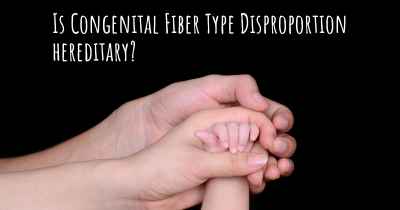Which are the causes of Congenital Fiber Type Disproportion?
See some of the causes of Congenital Fiber Type Disproportion according to people who have experience in Congenital Fiber Type Disproportion

Congenital Fiber Type Disproportion (CFTD) is a rare genetic muscle disorder that is characterized by a significant difference in the size and proportion of muscle fibers. It is typically present at birth or becomes apparent in early childhood. CFTD affects the skeletal muscles, which are responsible for voluntary movements such as walking, running, and lifting objects.
The exact cause of CFTD is not yet fully understood, but it is believed to be primarily caused by genetic mutations. Several genes have been identified as potential contributors to the development of CFTD, including the TPM3, TNNT3, and ACTA1 genes. These genes provide instructions for the production of proteins that are essential for muscle contraction and function. Mutations in these genes can disrupt the normal development and functioning of muscle fibers, leading to the characteristic fiber type disproportion seen in CFTD.
In some cases, CFTD may be inherited in an autosomal dominant or autosomal recessive manner. Autosomal dominant inheritance means that a person only needs to inherit one copy of the mutated gene from one parent to develop the disorder. Autosomal recessive inheritance, on the other hand, requires the individual to inherit two copies of the mutated gene, one from each parent.
While genetic mutations are considered the primary cause of CFTD, other factors may also contribute to the development of the disorder. These include environmental factors, such as exposure to certain toxins or infections during pregnancy, which can potentially affect the normal development of muscle fibers. Additionally, some cases of CFTD may occur sporadically, without a clear family history of the disorder, suggesting the involvement of other genetic or environmental factors that are yet to be identified.
Diagnosing CFTD typically involves a combination of clinical evaluation, muscle biopsy, and genetic testing. During a muscle biopsy, a small sample of muscle tissue is taken and examined under a microscope to assess the size and proportion of muscle fibers. Genetic testing can help identify specific mutations or abnormalities in the genes associated with CFTD.
Treatment for CFTD is primarily focused on managing the symptoms and improving quality of life. This may involve physical therapy to help maintain muscle strength and mobility, assistive devices to aid in daily activities, and medications to alleviate symptoms such as muscle stiffness or pain. Regular monitoring and follow-up with healthcare professionals are essential to ensure appropriate management of the condition.
In conclusion, Congenital Fiber Type Disproportion is primarily caused by genetic mutations in genes involved in muscle development and function. While the exact cause is not fully understood, it is believed that environmental factors and other genetic abnormalities may also play a role. Early diagnosis and appropriate management can help individuals with CFTD lead fulfilling lives despite the challenges posed by the disorder.








